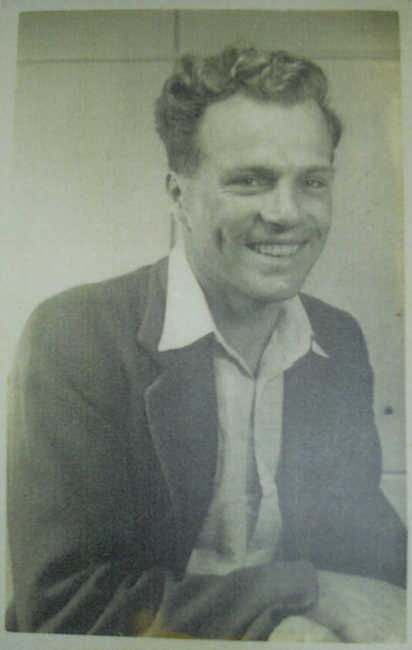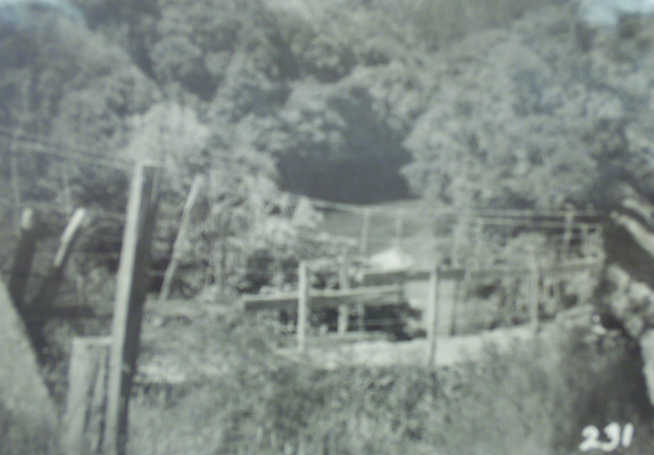Working for a better world – as a politician, a scientist and in the anti-nuclear movement Dorothy – 18/07/03
Neil talks about some special interests – election to the Canterbury Regional Council, opposing use of nuclear power, joining anti nuclear peace groups, countering the claims of ‘Establishment Science’.
Entry into local body politics The Regional Council has a lot of environmental issues so as an environmental scientist Neil felt it was an appropriate body on which he could put his skills to good use. Neil had delivered hundreds of talks to the public about the effects of weather, climate change, wind, solar energy, air pollution, droughts and water problems, all of which are regional issues. When Neil stood in 1992 for the Regional Council he was very pleasantly surprised to get over 52,000 votes.
It worked out that this figure represented two and a half votes for every person he had spoken to in his public lectures. As he was doing weather forecasting on 93FM and the weather feedback programme on 3ZB these were further helpful avenues for getting information across to the public and getting his profile better known.
The high number of votes was also the result of Neil’s Lincoln teaching and research which was driven by questions from students and the public about weather, the environment, nuclear power and other related issues.
Submission to the Royal Commission on nuclear power When the Prime Minister, the Hon. Robert Muldoon, set up a Commission on nuclear power in the 1970s Neil was invited by the Commission to prepare a technical report on “Renewable Energy”, because they had received so many submissions from Green groups claiming that renewable energy would be better than nuclear energy. These were all opinions and no one had presented expert evidence. Neil prepared a report based on proven and used technology so that he could assess the environmental effects and costs, etc, because he was basing his comments on real activities.
His evidence was drawn from all round the world. He used his wave power research in the UK, geothermal activity in Iceland and Italy and windpower work in Holland, the UK, the US, Germany and France. He covered solar energy, wind energy, biomass and biogas, geothermal activity and thermal power. His observations on thermal power included Wairakei which was generating about 169 megawatts of electricity, outputting continuously for most of the year 450 megawatts of hot water close to boiling, which was going into the Waikato River and significantly changing the river’s temperature and arsenic levels caused by the heavy metals in the ground. The Waikato developed a weed that loved warm water and arsenic, but later this caused a problem. Where previously river weed had been gathered to keep the river clear and running free and then was used for fertiliser, this new weed could not be used because of its arsenic content.
“One of the questions that was raised,” Neil recalled, “was why I was suggesting that the 450 megawatts of hot water should be pumped from Wairakei up through Hamilton to Auckland for industrial process heat and house heating. Mr Green on behalf of ECNZ which was proposing to have nuclear power interrogated me and asked about the loss of energy while it was being pumped a distance of about 100 km. I asked him what would be the loss from a power line over that distance. His reply was that it would be less than 10%, to which I replied that the loss from a pipeline would be less than 3%. He questioned the source of my information, and I was able to tell him that the figure was drawn from the records of a pipeline in Italy which is 108 km long and has less than 3% loss. Very quickly the cross-examination changed its nature because the Chairman of the Royal Commission, a former retired High Court Judge, Sir Thaddeus McCarthy, said after about the fifth question, ‘Mr Green, read page 5 of Dr Cherry’s evidence. That’s the answer.’
He said that three or four times and finally Mr Green realised that the panel had understood my evidence very well and trying to criticise it was going to discredit the ECNZ representatives.
“That has been my experience in other courts too when I have been face-to-face with judges and panels because as a University teacher I explain things in similar concepts where possible. That was quite a positive experience. The evidence was requested and apparently was well received by the panel because they accepted that it was only based on existing technology. It was clear that I knew what I was talking about and the cost benefit analysis was very good and based on reality.”
Very soon after that Sir Robert announced that the Government had decided against having nuclear power because it was too expensive. There was already a large environmental and peace movement in New Zealand working for a nuclear-free New Zealand. That was stimulated by the Royal Commission and it was in the 1980s under the Labour Government that the nuclear-free campaign took off.
Earlier the Labour Government under Norman Kirk had established the New Zealand Energy Research and Development Committee and funded research into renewable energy and energy conservation.
Involvement with anti-nuclear groups It was in 1974 that Neil joined the staff at Lincoln University. In that period he was involved with Scientists Against Nuclear Arms (SANA) and was the local convener of that group working for a saner world. They worked very closely with the Physicians Against Nuclear War.
The various aspects of Neil’s work seem at different times to have worked together for a significant outcome. He was on the National Executive of Christian World Service representing the Baptist Church and was the Chair of the Peace Cluster of the Christian World Service because of his involvement with the peace movement, including the International Year of Peace.
It doesn’t pay to accept what you hear at face value. In the late 70s Neil attended a Conference on Nuclear Winter held in Australia. ‘Nuclear Winter’ referred to the heavy, dark, carbon-filled clouds resulting from the burnt houses, cities, forests after a nuclear explosion.
One speaker, a CSIRO scientist, talked about Nuclear Winter and Nuclear Summer. The cloud after a nuclear explosion would go round the world like a volcanic eruption. Volcanic eruptions produce white clouds, and the nuclear clouds would be black, strongly absorbing the sunlight and keeping it from the ground, even more so than clouds from a volcanic eruption.
He was the only person talking about there being a nuclear summer, because it is going to warm the world. A professor from Colorado State University, Professor London, asked him, “Are you using your textbook to do these calculations of the radiation balance?” The scientist replied that he was, and Professor London followed up by mentioning a particular equation in the textbook, and asking if that was the basis of his calculation. When the scientist stated that it was the key equation, Professor London asked, “Do you realise that you’ve got the sign wrong?. Your text book is a very good book and I use it, but on that equation the sign is wrong. You are saying that it is going to get warmer, but if the sign is wrong what does that mean?”
The scientist replied, “Oh, you’re right.” The most intriguing next development was, because he was the only skeptical scientist there, he was immediately interviewed by the media. He said to the media that the other scientists were all wrong and there was going to be a nuclear summer. And this took place after he had admitted to the whole conference that his calculations were wrong!
Scientists shifting ground when confronted by the media This gave to Neil an example of how official Government scientists often take a political position when faced with the media, even when in front of a conference they have already admitted that they are wrong. An example of this occurred at the Vienna Conference on Electromagnetic Radiation when everyone agreed that there were non-thermal biological effects. Those agreeing included Dr Michael Repacholi, because he had seen the evidence, but he would not sign the declaration because it was not a WHO conference which he had organised. About a month later he was organising a WHO workshop on the biological effects of EMR, and the question was, “Were there any non-thermal effects?” The report of which he was in charge said that there were no effects.
This bears some resemblance to the Royal Society’s report on EMR which says that there are no occupational studies showing effects. Neil wrote to the President of the Royal Society saying that this is not true. He sent a copy of the Review Paper reviewing over 300 studies of which one hundred gave good evidence. To say that there were no studies was not true. In the letter in reply the President said that they stand by Dr McEwen’s integrity.
‘Establishment Science’ Neil has come up with this concept and explains it. “There is a certain world view of what is accepted science in medicine, dentistry, and a lot of areas of the Ministry of Health. This includes organic sprays and amalgam in fillings in the teeth, and the position is that there is no problem.
“Their argument is, ‘If the spray is organic there is no problem, and we all use amalgam so there is no problem. The scientists at the National Radiation Laboratory are in touch with the world experts, so therefore they know what they are talking about. The National Radiation Laboratory in Australia is staffed by experts and they know what they are talking about. They advise the Government.’
“In all those cases I know that they are considered scientifically wrong in other countries. For instance Sweden banned amalgam years ago because mercury is a neurotoxin. There were problems for dentists with the amalgam. Organic sprays are toxic for animals which is probably consistent with the fact that these sprays cause health effects. However, the Ministry of Health does not have a full survey to determine that they should or should not be used.
“The principle which I often use is – The absence of evidence is not evidence.
“It is not valid to say that there has not been a study, and therefore there is no effect. What is true is that there has not been a study and therefore there is no evidence.
“Regarding the genetic effects on the atomic bomb victims in Japan there is an official establishment position that there are no second or third generation effects, yet there have been no full studies done in Japan on this subject. However, in interviewing people in Japan researchers from the Peace Movement have been told that a lot of the women have been encouraged to have abortions to ensure that they did not have deformed children. This would be a way of ensuring that in a survey there were no deformed children reported.”




